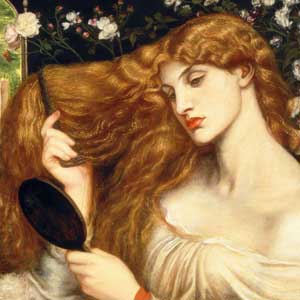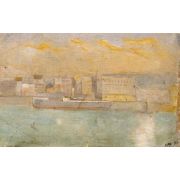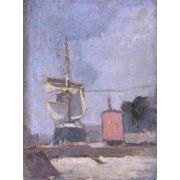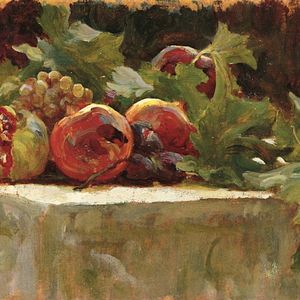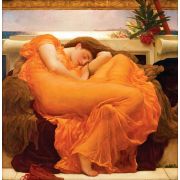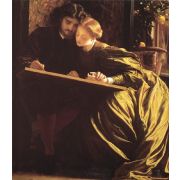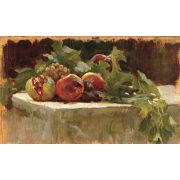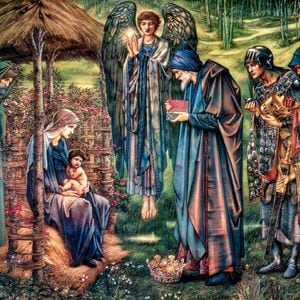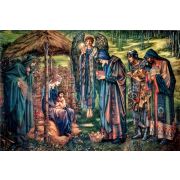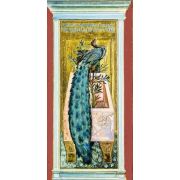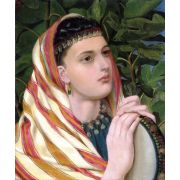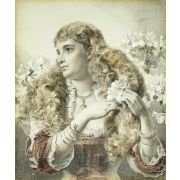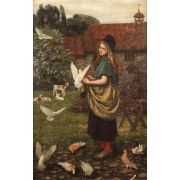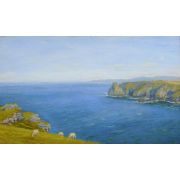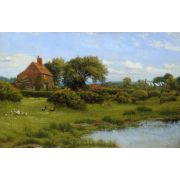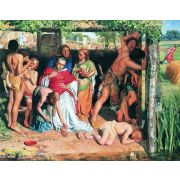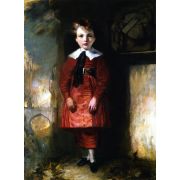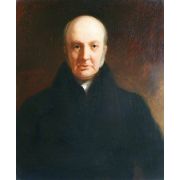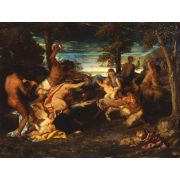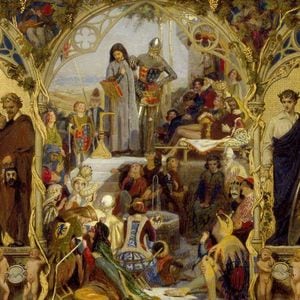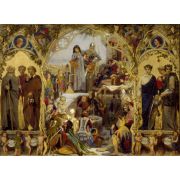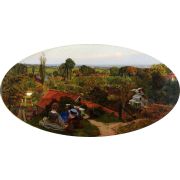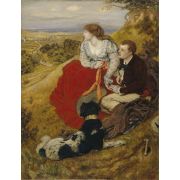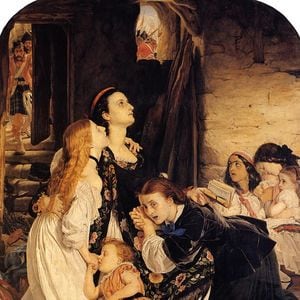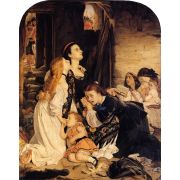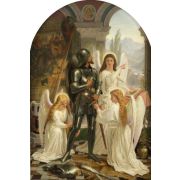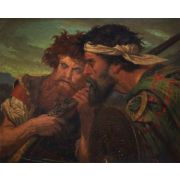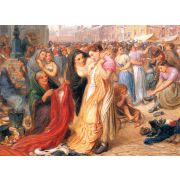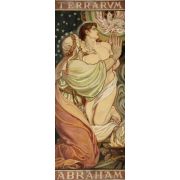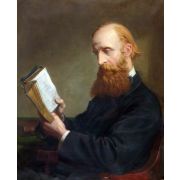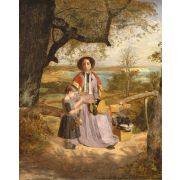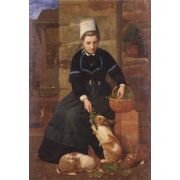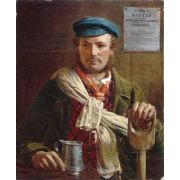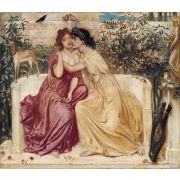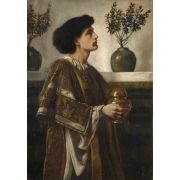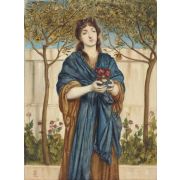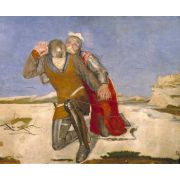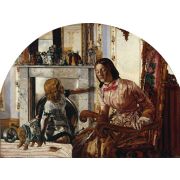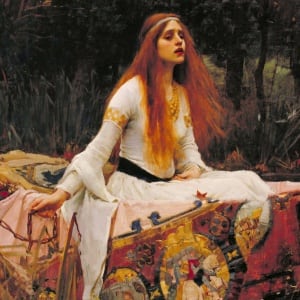
Pre-Raphaelite Brotherhood
Pre-Raphaelite Brotherhood
1 to 14 out of 14 artists
Dante Gabriel Rossetti
1828 -1882, British / Romanticism and Pre-Raphaelite Brotherhood, 219 works
Sir John Everett Millais
1829 -1896, British / Pre-Raphaelite Brotherhood, 244 works
Sir Frederic Lord Leighton
1830 -1896, British / Pre-Raphaelite Brotherhood and Academic Art, 239 works
Sir Edward Burne-Jones
1833 -1898, British / Pre-Raphaelite Brotherhood, 155 works
Anthony Frederick Sandys
1829 -1904, British / Pre-Raphaelite Brotherhood, 134 works
Arthur Hughes
1832 -1915, British / Romanticism and Pre-Raphaelite Brotherhood, 89 works
William Holman Hunt
1827 -1910, British / Pre-Raphaelite Brotherhood , Romanticism , and Symbolism, 74 works
William Dyce
1806 -1864, Scottish / Pre-Raphaelite Brotherhood, 71 works
Ford Madox Brown
1821 -1893, British / Romanticism , Pre-Raphaelite Brotherhood , and Pre-Raphaelite Brotherhood, 54 works
Sir Joseph Noel Paton
1821 -1901, British / Pre-Raphaelite Brotherhood, 40 works
Frederick James Shields
1833 -1911, British / Pre-Raphaelite Brotherhood, 29 works
James Collinson
1825 -1881, British / Pre-Raphaelite Brotherhood, 17 works
Simeon Solomon
1840 -1905, British / Romanticism and Pre-Raphaelite Brotherhood, 17 works
Frederic George Stephens
1827 -1907, British / Pre-Raphaelite Brotherhood, 5 works
1 to 14 out of 14 artists
The Pre-Raphaelite Brotherhood, later known as the Pre-Raphaelites, was a group of English painters, poets, and art critics. It was started in 1848 by William Holman Hunt, John Everett Millais, Dante Gabriel Rossetti, William Michael Rossetti, James Collinson, Frederic George Stephens, and Thomas Woolner. He formed a seven-member "Brotherhood" based partly on the Nazarene. The Brotherhood was never more than a loose group. Artists like Ford Madox Brown, Arthur Hughes, and Marie Spartali Stillman shared their beliefs. Edward Burne-Jones, William Morris, and John William Waterhouse were all later people who agreed with the Brotherhood's ideas.
The group wanted to return to the rich detail, bright colors, and complicated compositions of Italian art from the 1500s. They didn't like what they thought was the mechanical way that Mannerist artists, who came after Raphael and Michelangelo, did things. The name "Pre-Raphaelite" comes from the Brotherhood's belief that Raphael's classical poses and elegant compositions had ruined the way art was taught in schools. The group was mainly against the influence of Sir Joshua Reynolds, who started the English Royal Academy of Arts and was called "Sir Sloshua" by the group. William Michael Rossetti said that to the Pre-Raphaelites, "sloshy" meant "anything loose or sloppy in the process of painting" and, by extension, "anything or anyone of a common or conventional kind." The group linked their work to the English critic John Ruskin, whose ideas were influenced by his religious background. There were many Christian ideas.
The group kept thinking that history painting and mimesis, or copying nature, were essential parts of art. The Pre-Raphaelites called themselves a reform movement and gave their art style a name. They also put out a magazine called The Germ to spread their ideas. In the Pre-Raphaelite Journal, the group's arguments were written down. After almost five years, the Brotherhood split up.
John Brett, Philip Calderon, Arthur Hughes, Gustave Moreau, Evelyn De Morgan, Frederic Sandys (who joined the Pre-Raphaelite circle in 1857), and John William Waterhouse are all artists who were influenced by the brotherhood. Ford Madox Brown, who was involved with them from the start, is often thought to have followed the Pre-Raphaelite ideas closely. Aubrey Beardsley, a follower Burne-Jones significantly influenced, created his unique style.
After 1856, Dante Gabriel Rossetti became a source of ideas for the movement's medicalizing branch. He was the link between the two types of Pre-Raphaelite painting (nature and Romance) after the PRB got lost in the last few decades of the 19th century. Rossetti was the least dedicated to the brotherhood, but he kept the name and changed how it looked. He started painting versions of femme Fatales, like Proserpine, The Blue Silk Dress, and La Pia deemed, with models like Jane Morris. His work influenced his friend William Morris, whose company Morris, Marshall, Faulkner & Co. he joined as a partner. He may have had an affair with William Morris's wife, Jane. Ford Madox Brown and Edward Burne-Jones both joined the firm as partners. The ideas of the Pre-Raphaelite Brotherhood influenced many interior designers and architects through Morris's company. This sparked an interest in medieval designs and other crafts, which led to the Arts and Crafts movement, which William Morris led. Through the Della Robbia Pottery company, Holman Hunt was a part of the movement to change the way design was done.
After 1850, Hunt and Millais stopped trying to copy medieval art exactly. They focused on the realist and scientific parts of the movement, but Hunt kept focusing on the spiritual meaning of art. He tried to find a middle ground between religion and science by making accurate observations and studies of places in Egypt and Palestine for his paintings about biblical subjects. Conversely, Millais gave up Pre-Raphaelitism after 1860 and started using Reynolds's much broader and looser style. William Morris and others criticized him for going against his own beliefs.
Pre-Raphaelitism had a significant effect on Scotland and on the artists who lived there. William Dyce, born in Aberdeen, is the Scottish artist most associated with the Pre-Raphaelites (1806–1864). Dyce made friends with the young Pre-Raphaelite artists in London and told Ruskin about their work. The spirituality of his later work, like The Man of Sorrows and David in the Wilderness (both from 1860), was similar to that of the Pre-Raphaelites. Joseph Noel Paton (1821–1901) went to the Royal Academy schools in London, where he met Millais. He followed Millais into Pre-Raphaelitism, making paintings like The Blue Tryst that focused on detail and drama (1855). People have said that his later images, like those of Millais, fell into popular sentimentality. James Archer (1823–1904), whose work includes Summertime, Gloucestershire (1860) was also influenced by Millais. He started a series of Arthurian-themed paintings in 1861, including La Morte d'Arthur, Sir Lancelot, and Queen Guinevere.
Lawrence Alma-Tedema was another painter who Pre-Raphaelism influenced.
The movement influenced many British artists in the 20th century.
Rossetti was seen as an early member of the European Symbolist movement. There is evidence that Rossetti influenced some of the paintings by the German artist Paula Modersohn-Becker.
Some say that the young J. R. R. Tolkien, who wrote The Hobbit and The Lord of the Rings, was strongly influenced by the Pre-Raphaelites' paintings of mythological scenes. These paintings are in the Birmingham Museum & Art Gallery's world-famous collection. Tolkien thought of his group of school friends and artists, the so-called TCBS, as similar to the Pre-Raphaelites.
In the 20th century, people's ideas about art changed, and art stopped trying to show the real world. After the First World War, Pre-Raphaelite art was looked down on because of its literary qualities, and critics called it "artistic bric-a-brac" because it was too sentimental and made up. In the 1960s, Pre-Raphaelitism came back in a big way. A canon of Pre-Raphaelite art was re-established through exhibitions, catalogs, and a 1984 show at London's Tate Gallery. In 2012–13, there was another big show at Tate Britain, along with many others.
In the late 20th century, Pre-Raphaelitism was the basis for the goals of the Brotherhood of Ruralists, the Stuckists, and the Birmingham Group.
